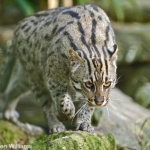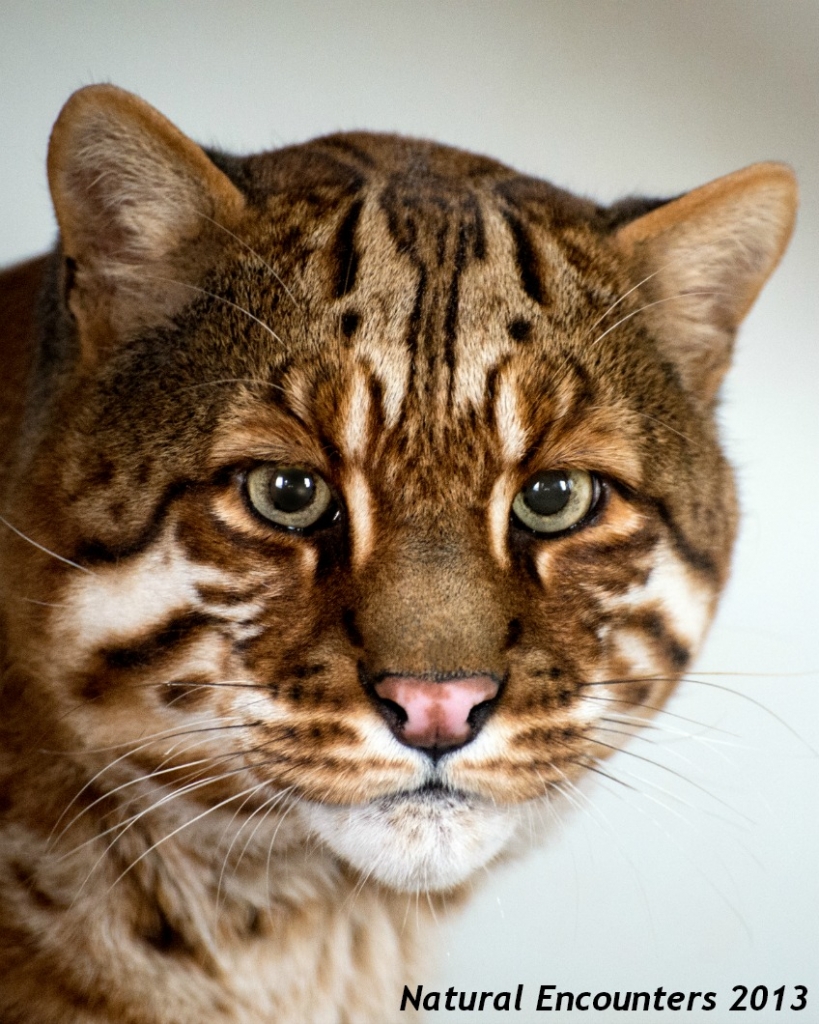By Ricky Reino
This post is about my most recent trip – a weekend to Thailand to spend time with flat-headed cats!
Flat-headed cats are a little known species, native to some parts of south east Asia, such as the island of Borneo. They are specialised fish hunters and are classed as endangered on the IUCN Red List.
Around a year and a half ago I saw via the internet that there were a handful of flat-headed cats kept in captivity in Thailand, and so decided to get in contact with these collections.
It took a while of being passed between email addresses, but finally I was put in contact with the animal manager of a well known zoo not too far from Bangkok.
I explained through our conversations about myself and my interest in spending time with the zoo’s flat-headed cats to get a small glimpse at their behaviour and learn how they are managed by their keepers; but also offered to help bring ideas on enrichment etc – this was greatly accepted and we started to discuss things further.
I had to write an official letter, with proof of my professional history, to the director of the zoo, who accepted my request and sent me an official invite which was fantastic, and after that I was able to start planning.
I didn’t have anyone that was able to come with me from the UK, but as it was my cousin was travelling around Thailand with his girlfriend at the time so we all arranged to meet at Bangkok airport upon my arrival and go from there.
September 2014 arrived, and after a very long (not made better by a very loud, drunk man in the seat behind me) flight, I made my way through Bangkok airport, got screened for Ebola, passed through customs and then found my cousin.
The animal manager of the zoo was also waiting at the airport in one of the zoo vehicles, and drove my cousin and I the hour journey to the zoo, passing my massive traffic jams, and little villages, eventually moving into beautiful lush green forest.
As soon as we got there I was shown to my very own apartment (they were really taking care of me!) where I had time to freshen up then we were taken to meet the director. Both myself and my cousin were given the warmest of welcomes and also gifted a lovely book all about the animals kept at the zoo with some incredible pictures in it.
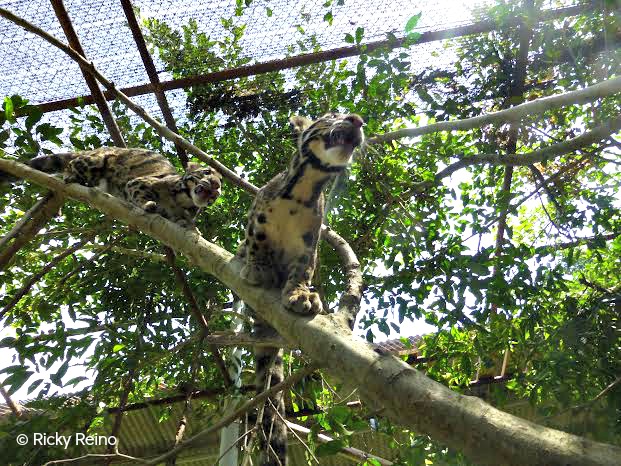
I was itching to see the zoo, so the animal manager drove us round taking us to see lots of animals such as the elephants, and the clouded leopards – which are another species of small cat, and an incredibly beautiful one at that! The zoo has a great breeding program for this species, working with other zoos globally to move on youngsters to spread the genes. I was privileged enough to be given the opportunity to interact with some young hand reared clouded leopards after meeting with the head keeper of these cats, which was fantastic. They were so full of life and so so agile running around and jumping out of the trees, running along the ground, bouncing off my shoulders then leaping back into the trees.
We were shown around the rest of the cat section, but as it was getting late we didn’t have much time so were taken back to the apartment and then taken for dinner at a beautiful wooden tower overlooking the forest about 20 minutes away from the zoo.
Unfortunately that night I became VERY ill, and had to rearrange plans and flights to come home as soon as possible. I was really glad that my cousin was there as he made sure I was OK and kept me hydrated etc.
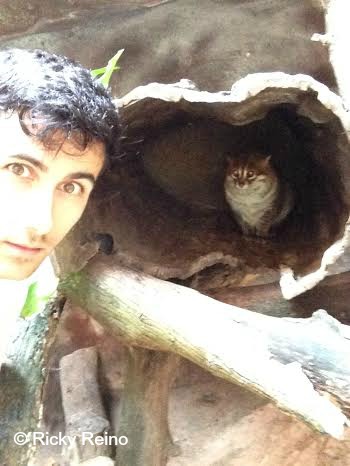 Next morning, I forced myself to get up to do what I had travelled all the way to Thailand to do, even if it was just for the day rather than for a week as planned. I met the head cat keeper and was taken to the enclosure where the flat-headed cats were.
Next morning, I forced myself to get up to do what I had travelled all the way to Thailand to do, even if it was just for the day rather than for a week as planned. I met the head cat keeper and was taken to the enclosure where the flat-headed cats were.
The first thing that struck me was the smell (which didn’t help when I wasn’t feeling great!) – lots of small cats have a strong smell, but this was a very different & strong smell. The zoo kept two males, one of which was hand reared. The cats clearly didn’t have much interaction with their keepers as they both stayed in their hollowed out log shelter, just watching what we were doing.
I went around the enclosure cleaning up the cats’ mess, raked their substrate and scrubbed out & refilled their pond as we were going to put their food ( a fish each) in there later that day. One of the cats came out of the resting place and walked over to the freshly cleaned pond once I had moved away from it, and interestingly I noticed that as he walked around, he was constantly letting out a very fine stream of urine, as a way of spreading his scent – this is probably why the smell in the enclosure was so strong!
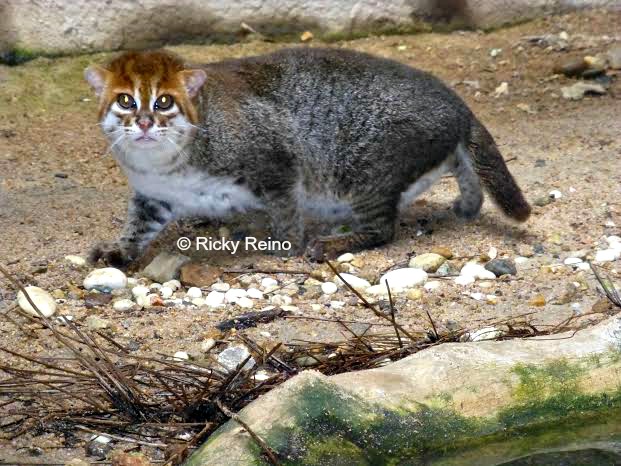
It was interesting to really see the physique of this species when the cat was up and about.. a very short, round shape with a short and flattened tail. wide, webbed paws with claws that stuck out, just like those of the very closely related fishing cat. This species mainly hunts fish, so these physical adaptations help it hunt in and around the water. It was interesting to see just how flat the top of this cats’ head was too.. the reason why it is called the ‘flat-headed cat’.
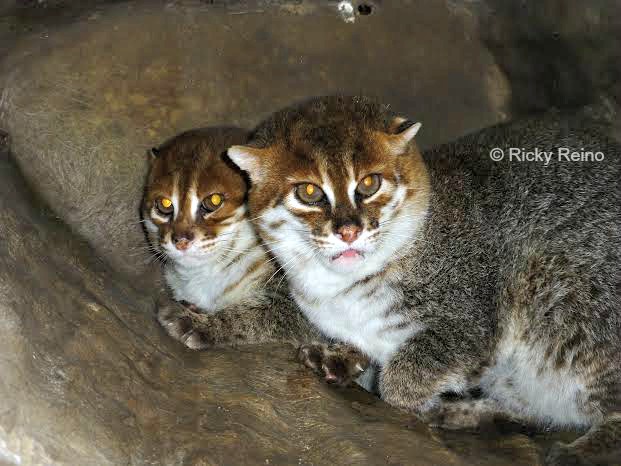
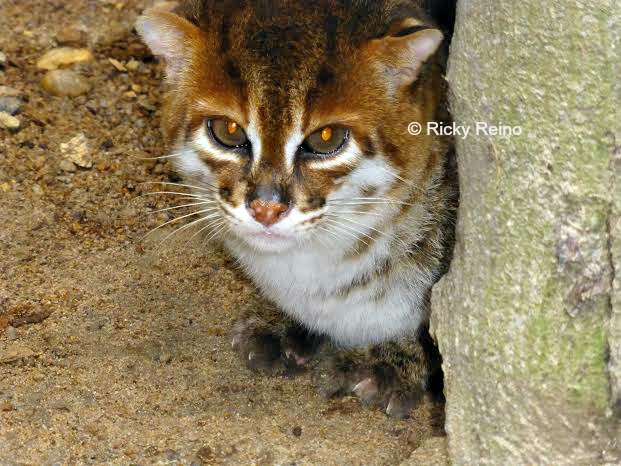
Due to my changed flight schedule, I had to leave the flat-headed cats and the zoo, despite not having spent as much time there as I would have liked. I travelled back to the airport and said goodbye to my cousin and his girlfriend so that I could catch my flight home.
I keep in contact with the animal manager, and am very thankful at being given the opportunity to spend some time, however short it was, with one of the most endangered cat species on the planet. The opportunity for me to back to the zoo to spend time learning more is there, and I will definitely be going back in the future.
Thanks for reading!
Ricky
See also Flat-headed Cat
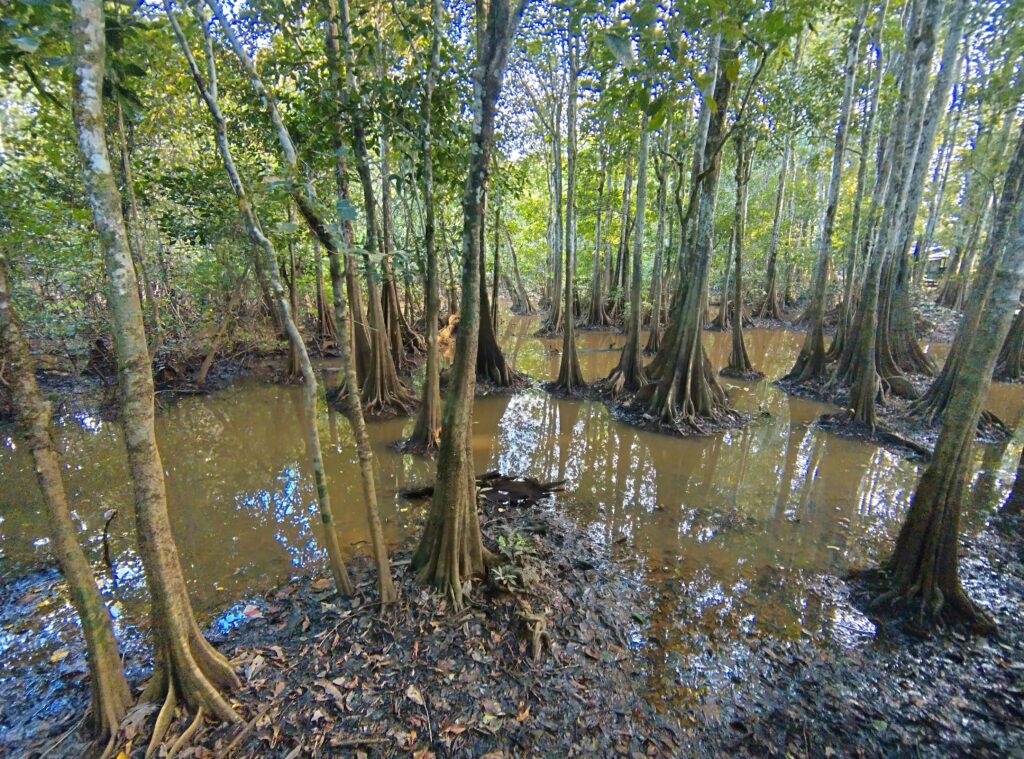
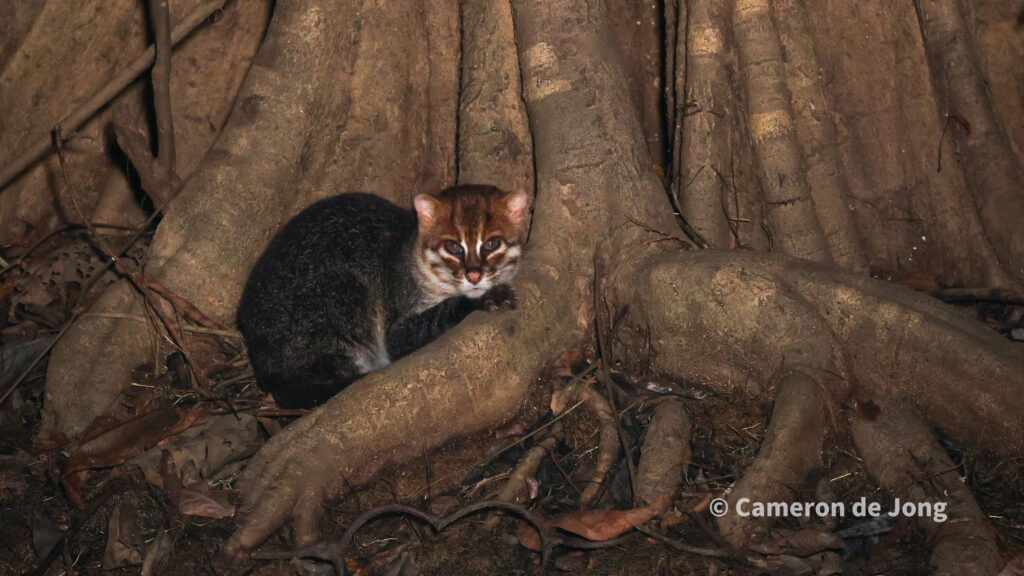
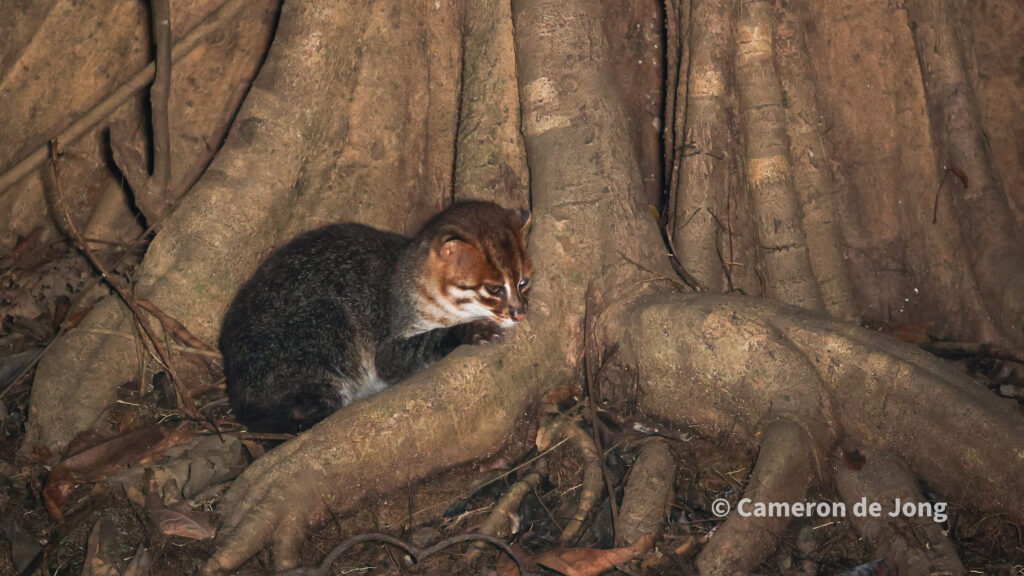
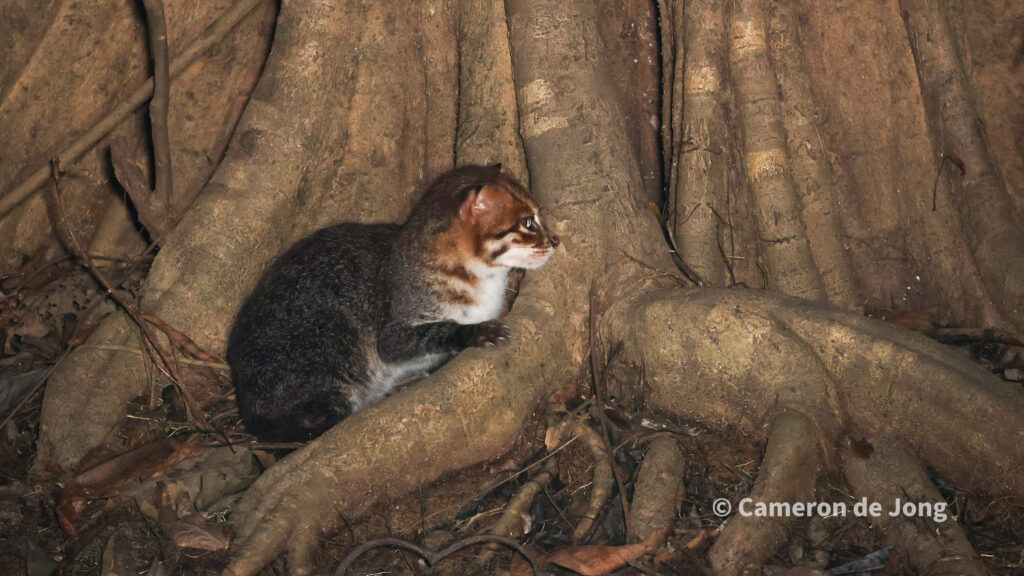
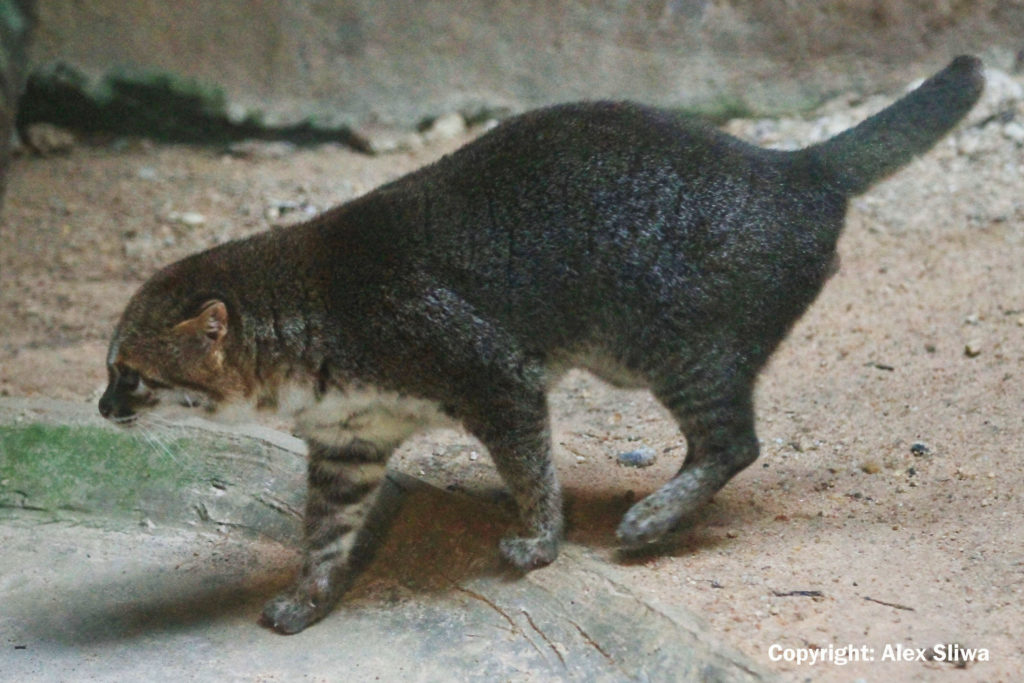
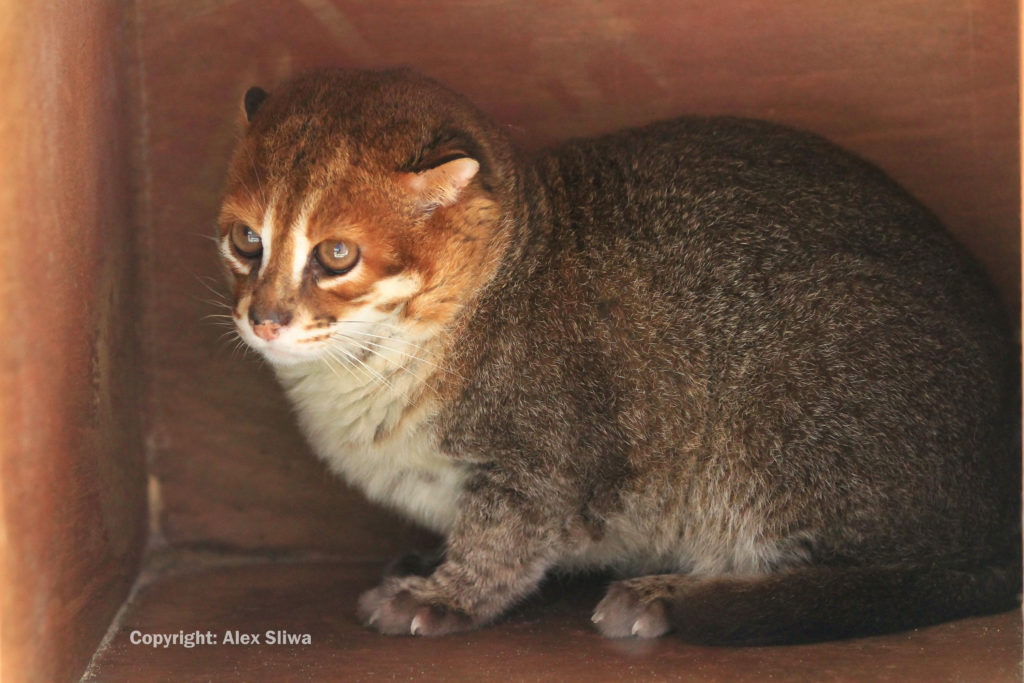
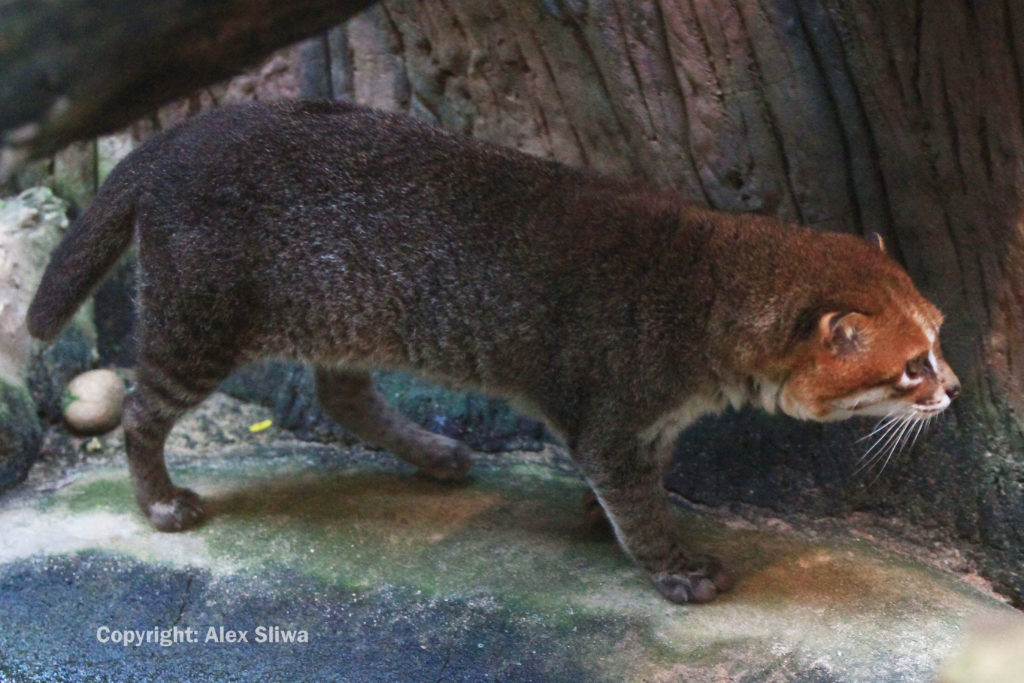
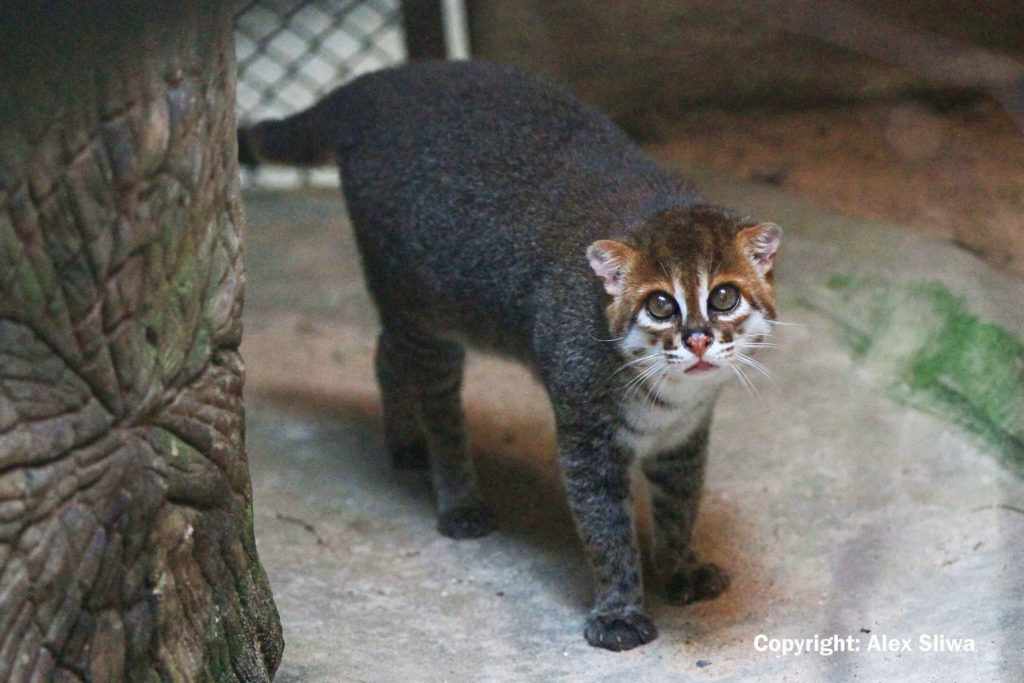
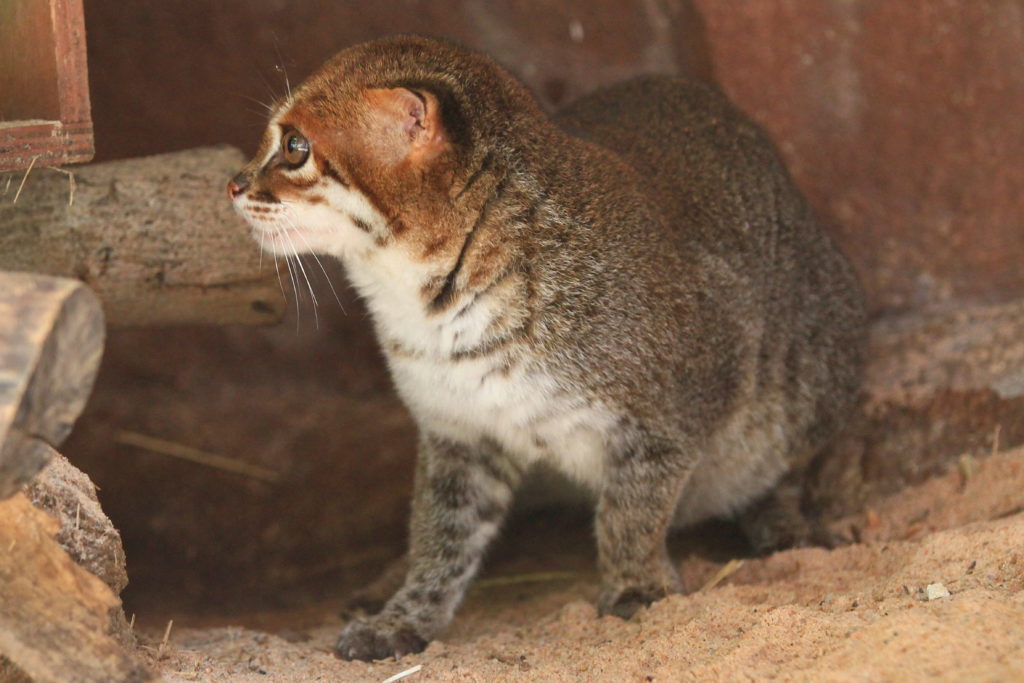
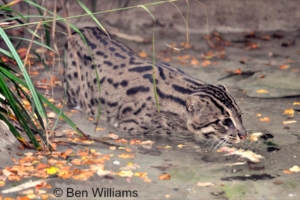 The endangered Fishing Cat Prionailurus viverrinus is at home near water bodies. This unique cat has been known to science since the early 19th century. However, its recent discovery in mangroves along the east coast of India and in Cambodia reveals that still little is known about its distribution and ecological needs. In Asia, wetlands are rapidly being devastated, which results in declining Fishing Cat populations in all range countries.
The endangered Fishing Cat Prionailurus viverrinus is at home near water bodies. This unique cat has been known to science since the early 19th century. However, its recent discovery in mangroves along the east coast of India and in Cambodia reveals that still little is known about its distribution and ecological needs. In Asia, wetlands are rapidly being devastated, which results in declining Fishing Cat populations in all range countries.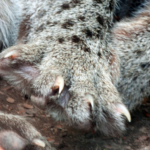 The objectives of the first Conservation Strategy Plan revolve around three major themes, namely ecological, socio-cultural and policy issues. Participants pledged to implement planned activities within the next five years. They will collaborate in developing manuals for policy makers and researchers as well as comprehensive habitat and distribution maps. They will continue to work with local communities and address Fishing Cat conservation needs through advocacy networks. Information material will be created to raise awareness amongst global stakeholders, both young and old.
The objectives of the first Conservation Strategy Plan revolve around three major themes, namely ecological, socio-cultural and policy issues. Participants pledged to implement planned activities within the next five years. They will collaborate in developing manuals for policy makers and researchers as well as comprehensive habitat and distribution maps. They will continue to work with local communities and address Fishing Cat conservation needs through advocacy networks. Information material will be created to raise awareness amongst global stakeholders, both young and old.